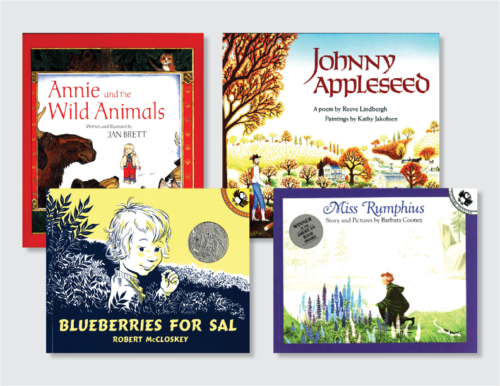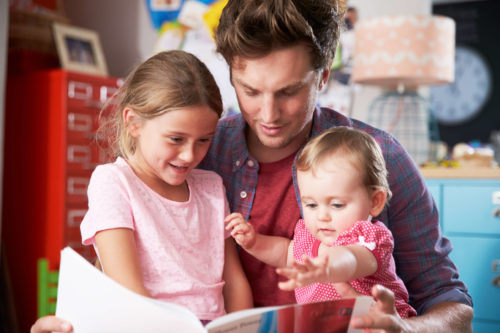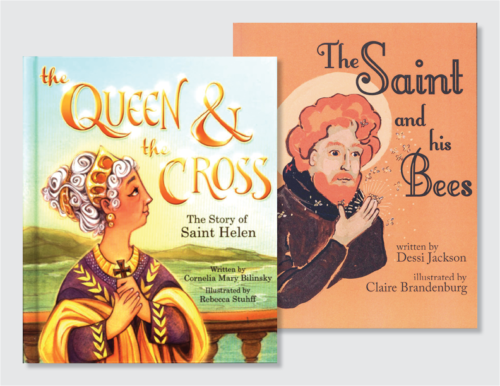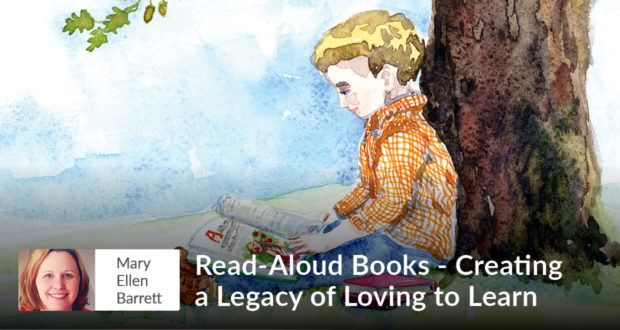Summary
Mary Ellen Barrett on instilling a joy of learning in our children and why Seton Home Study School is adding more Read-Aloud books to the Pre-K curriculum.As home educating parents, we know that what we do early in our children’s development often has long term effects on their ability and desire to learn.
When I look back at my own childhood, some of my earliest memories are of being read to by my mom and seeing both she and my father reading themselves. In setting these examples, they formed their children into readers.
The Importance of Reading Aloud
The importance of reading aloud to your children is undeniable. It not only builds happy memories of childhood, it has a profound effect on development. Reading aloud has long been linked to emergent literacy ability, which must be developed long before actual phonemic awareness takes place.
Toddlers learn quickly that there is a relationship between the printed and the spoken word. They learn to hold a book properly, to track with their eyes the words on the page, and eventually begin to intuit that stories have a beginning, a middle, and an end.
The importance of these developmental milestones is incalculable to the long term success of an emerging reader. Because of this, Seton has begun including picture books in our Pre-Kindergarten curriculum.

Bonding Over Reading Together
The bonding that occurs between parent and child as they enjoy a book will connect them both profoundly. Most of us have happy memories of being read to as children, and I know few people who don’t have a favorite story that was read to them often by a parent or grandparent.
When writing this article I asked my children about their own favorite read-aloud books. The answers led to great memories, lots of laughter, and a hunt for some we hadn’t visited in a while.
The Little Red Caboose, Winnie-the-Pooh, The Mitten, Curious George, Jamie O’Rourke and the Pooka as well as classics like Charlotte’s Web, Little House on the Prairie and A Wrinkle in Time were discussed and fondly remembered.
When reading aloud becomes part of your family’s culture, you are, by default, raising children to whom books are important. When books are important, ideas are important, and suddenly you are raising children who think, process, absorb, and delight in learning, children who will learn very early how to be still and take things in, who develop daily the habit of being quiet and listening carefully.
The Beauty of Picture Books
Homeschooling gives parents of small children wide swaths of time to expose their little ones to the wonder and delight that can be found in picture books.
Every childhood should include a little bit of this magic. Kings and queens, knights and maids, dragons and fairies all serve to form young minds, expand the imagination, inspire creativity, and provide hours of entertainment.

It’s easy to dismiss the genre of picture books as unworthy and childish, but it’s extremely unwise. A child fed on well-written, well-illustrated books from the beginning will learn intuitively the difference between good writing and bad, between worthy art and poor art.
“A picture book is a small door to the enormous world of the visual arts, and they’re often the first art a young person sees,” says Tomie dePaola, children’s author.
In a society where so much of what is ugly is being crammed down our throats as art and defended in the cause of self-expression, exposing children from the time they can sit up to lovely pictures and worthy ideas, is most important. Children who learn to recognize true beauty early on will instinctively shun what is ugly or unnatural.
The books Seton have chosen are by authors like Demi, Gennady Spirin, Marianna Mayer, Tasha Tudor, Ben Hatke, Neal Lozano, Jan Brett, and Barbara Cooney. Authors who elevate their words with beautiful illustrations that draw a child into their world, and allow a child’s imaginations to take flight.
Bringing Stories to Life
We hope that providing books in the pre-kindergarten program will encourage parents to take the time to throw themselves into the stories with their children. Use different voices, make all the noises, and ask, “what do you think will happen next?” Laugh at the funny stuff and express sadness when things go wrong.
“The way to read a fairy tale is to throw yourself in.” -W. H. Auden
Bring the story to life, make it part of your family culture that stories must be acted out. It’s good training for when children later read Shakespeare since it is my belief that Shakespeare cannot be read like a novel, but rather should always be spoken and emoted. It’s the only way to understand and appreciate the nuances that the bard so brilliantly wove into every scene, every stanza, every moment.
Poetry too, should be read aloud whenever possible, and the beginning for little ones is Mother Goose’s Nursery Rhymes and a beautifully illustrated copy of Robert Louis Stevenson’s A Children’s Garden of Verses.
Stories About the Saints
Included in the stories provided by Seton are two beautiful saint stories. Our greatest responsibility and our greatest privilege as parents is to hand down the Faith, and these stories of great men and women living lives of exemplary holiness can help us. The Saint and His Bees and The Queen and the Cross will start your children learning about the saints.

It has been one of my great pleasures to seek out picture books of their patron saints for each of my children and godchildren. A twenty-year collection now occupies a few shelves in our home, and the books are still pulled out quite often. Even the adult children still enjoy listening to these stories.
We are confident that this small addition in our curriculum will reap huge rewards for Seton families. We want very much for you to enjoy these young years of learning and growing with your children and to make beautiful memories of reading books together.
We firmly believe that readers are created on the laps of their parents and hope to bring you more opportunities to share the gift of reading with your children in the future.

 Seton Magazine Catholic Homeschool Articles, Advice & Resources
Seton Magazine Catholic Homeschool Articles, Advice & Resources
